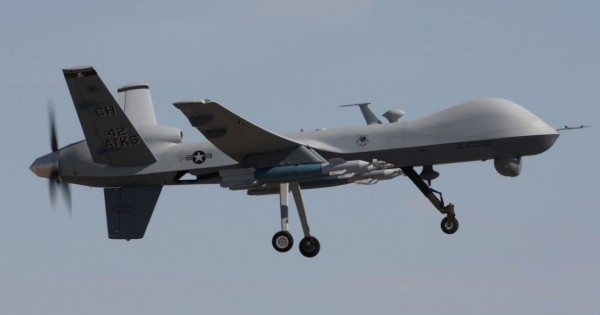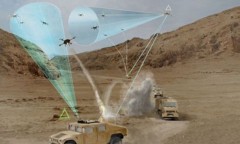By Arthur Dominic J. Villasanta , | March 29, 2017

MQ-9 Reaper flown by the 432nd Wing.
Remotely piloted vehicles (RPVs) such as the General Atomics MQ-1 Predator and General Atomics MQ-9 Reaper now provide most of the close air support (CAS) delivered by the U.S. Air Force in the twin campaigns to destroy ISIS in Mosul and Raqqa.
The role of manned CAS aircraft such as the Republic A-10 Warthog has been on the decline, especially in air operations against ISIS in Iraq and Syria over the past two years. RPV CAS is particularly evident in the ongoing Battle of Mosul to seize the Iraqi city of Mosul from ISIS, an effort that began in October 2016.
Like Us on Facebook
Air Force RPVs are also the predominant provider of CAS in the simultaneous Raqqa offensive by the Syrian Democratic Forces (SDF) to seize ISIL's capital city and stronghold in Syria.
These combat operations of the MQ-1 and MQ-9 in Iraq and Syria are being undertaken by the Air Force's 432nd Wing and 432nd Air Expeditionary Wing operating from Creech Air Force Base in Nevada. The latter unit is responsible for combat operations outside the United States.
CAS is a regular and growing responsibility for MQ-1 and MQ-9 operators, who have seen a lot more work in Iraq and Syria since the rise of ISIS, said Col. Case Cunningham, commander of the 432nd Wing and the 432nd Air Expeditionary Wing.
"Often as close as 30 meters from supported friendly forces on the ground, our aircrews are very professionally, very precisely employing weapons to take ISIL off the battlefield in those situations," said Col. Cunningham.
"I think that is not a well understood piece of what we are doing and certainly something that commanders on the ground are asking us to do day in and day out, multiple times a day."
He noted a sharp increase in the number of MQ-9 and MQ-1 smart bombs and missiles fired by his drones over the past four years.
In 2013, Predator and Reaper pilots from the wing fired about 500 bombs and missiles. That number increased to about 1,000 in 2014; 2,000 in 2015 and over 3,000 in 2016.
"In Iraq and Syria, over calendar year 2016 alone, MQ-1s and MQ-9s have deployed over 1,500 weapons against ISIS on the ground," said Col. Cunningham.
Operations by the 432nd Wing exceeded an astonishing 250,000 flight hours in 2016. Col. Cunningham estimated about 98 percent of those hours were spent in combat operations.
-
Use of Coronavirus Pandemic Drones Raises Privacy Concerns: Drones Spread Fear, Local Officials Say

-
Coronavirus Hampers The Delivery Of Lockheed Martin F-35 Stealth Fighters For 2020

-
Instagram Speeds Up Plans to Add Account Memorialization Feature Due to COVID-19 Deaths

-
NASA: Perseverance Plans to Bring 'Mars Rock' to Earth in 2031

-
600 Dead And 3,000 In The Hospital as Iranians Believed Drinking High-Concentrations of Alcohol Can Cure The Coronavirus

-
600 Dead And 3,000 In The Hospital as Iranians Believed Drinking High-Concentrations of Alcohol Can Cure The Coronavirus

-
COVID-19: Doctors, Nurses Use Virtual Reality to Learn New Skills in Treating Coronavirus Patients









